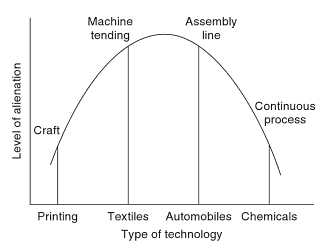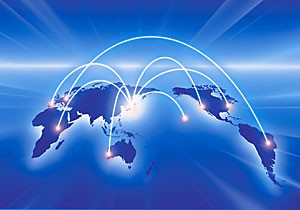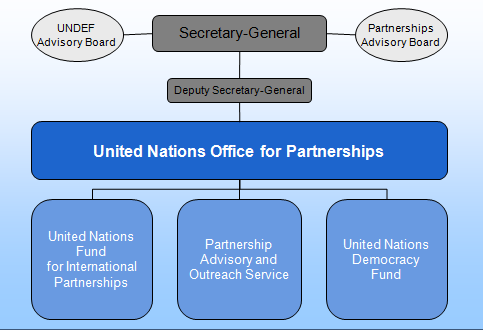Posts by Bill Nordick

Introduction Increasing range and complexity of technological developments employed in various industries has had dramatic implications on professional and even personal lives for many employees, along with impacting organisational culture. This article aims to assess the complexity of the technology employed in the industry as the prime cause of alienation in the workplace. The article starts with discussion of Marx’s Theory of Alienation followed by Blauner’s Theory of Technology and Alienation. Moreover, the article addresses a set of other relevant theoretical frameworks and approaches such as Nichools and Beynon’s (1977) criticism of Blauner and a brief analyses of studies conducted by Gallie (1978) and Zuboff (1988). It has been stated that “in the workplace the feeling of alienation mean that the individual has lost control over the process of production” (Sharma, 1998, p.22). Generally, alienation can be defined as “the feeling of being powerless to control one’s own destiny; a worker’s feeling of powerlessness caused by inability to control the work process” (Kronblum, 2011, p.474) and alienation is justly considered as an important issue from sociological viewpoint. Marx’s Theory of Alienation in the Workplace Marx specifies four types of alienation – alienation between worker and the work, alienation between workers, alienation of worker from the product, and alienation of worker from the process of work. Famously, Marx blames capitalism for the emergence of all of above types of alienation. It has to be noted that certain aspects of Marxist ideology including Theory of Alienation has been challenged from within communists by some philosophers such as Milovan Djilas, whereas different group communist philosophers such as Louis Pierre Althusser voiced against initiatives directed towards revising theoretical foundations of Marxism (Rehmann, 2013). Assessment of the impact of technology on the emergence of each of these types of alienation increases depth of this discussion. Specifically, with…

1. Introduction The level of competition in the global marketplace has become highly intensive and this fact is resulting in mergers and acquisitions between companies across countries and continents. There is no dispute that “mergers and acquisitions are a vital part of any healthy economy and importantly, the primary way that companies are able to provide returns to owners and investors” (Sherman and Hart, 2006, p. 1). However, in reality a range of issues may arise in mergers caused by cross-cultural differences, differences in management style, clash of personalities within senior level management and other reasons. This report attempts to analyse issues associated with Alcatel-Lucent merger failure. The report contains analysis of factors that enabled the merger to take place and the analysis of performance of company in present. Moreover, discussions are provided about cross-cultural issues at Alcatel-Lucent and new challenges for the company in an international area are described. 2. Factors that Allowed Merger in 2006 There were previous negotiation talks between Alcatel and Lucent in 2001 regarding the merger of the two companies. However, negotiations had failed due to suspicions of Lucent management that Alcatel was approaching the proposal like a takeover of Lucent, rather than ‘merger of equals’. The concept of “merger of equals” has been described as “a merger framework usually applied whenever the merger participants are comparable in size, competitive position, profitability, and market capitalisation” (DePamphilis, 2009, p.18). However, some circumstances have changed by 2006 that resulted in renewed merger talks between Alcatel and Lucent. First, the level of competition in mobile telecommunication and internet industry has intensified and the two companies needed to merge in order to be able to compete with Chinese manufacturers and other industry leaders. Second, as a result of numerous negotiations between the two companies on top level Lucent senior…

1. Introduction Elecdyne is a Tokyo-based manufacturer of consumer electronics products that has been operating in local market in Japan for over three decades. Currently employing 100 members of workforce, Elecdyne strategic level management is keen to explore the potentials of revenue maximisation through internationalisation. This article represents a critical analysis of Elecdyne international market expansion opportunities. The article starts with a brief analysis of Elecdyne current situation and an overview of business environment for the company with the application of STEEP framework. This is followed by analysis of country profiles of UK, Russia and Turkey as a potential new market for Elecdyne using a weighted scaling system. The article is completed by specifying strategic direction for Elecdyne and providing rationale for the choice of direction being offered. 2. Current/Future Business Environment It has been noted that “an organisation does not exist in isolation but is part of a broader business environment, making it an open system” (Amos et al., 2008, p.3). Accordingly, Elecdyne is faced with a set of challenges caused by external factors that need to be addressed in timely and effective ways. Challenges imposed to Elecdyne by external environment can be effectively illustrated through STEEP table where the abbreviation stands for social, technological, economic, ecological and political factors affecting the business. Social Ø Intensifying level of cultural globalisation Ø Ageing of population in developed countries (Blakemore and Warwick-Booth, 2013) Ø Changing patterns of families (single parents, same sex parents etc.) Technological Ø Declining duration of life cycle for consumer electronics products Ø Increasing frequency of technological innovations Ø Technological breakthroughs in the area of electronics products recycling Economic Ø Declining profit margins for consumer electronics products due to intensifying competition Ø Likelihood of economic crises such as global recession of 2007 – 2009 Ø Rising costs of operations…

1. Introduction Fordism can be defined as “a set of principles that includes technological measures, especially mass production on the assembly line, as well as economic strategies such as supporting mass consumption by lowering prices and increasing wages”[1]. The term is coined by Antonio Gramsci after the name of Henri Ford, a famous US industrialist and the founder of Ford Motor Company. The concept of Fordism has developed starting from 1910’s to reach its peak in the period between 1940’s to 1960’s. Fordism is closely associated with the notions of mass production and consumption. Prior to mass production assembly lines introduced initially in Ford factories, products were manufactured with the method of craft production, which involved the same workers being engaged in the many stages of manufacturing processes. The consumption point of Fordism stems from Henri Ford’s belief that company employees need to be able to purchase cars produced by Ford, thus the level of their wages were increased. Thus, it can be reasoned that “Model T, sold in millions, can be viewed as the herald of consumerism, the new phase in human history when consumption came to be seen no just as the means of survival but as the true path to the good and happy life”[2]. This article represents a critical evaluation of the concept of ‘Fordism’ within the settings of international political economy a range of related issues. The article starts with discussions about the evolution of Fordism. This is followed by critical assessment of the concept within modern international political economy. Moreover, the article contains a reflection of criticism associated with Fordism and analysis of circumstances that enabled emergence of Neo-Fordism. 2. Evolution of Fordism It has been argued that Fordist method of mass production primarily owes to the teachings of Taylorism, which has created…

1. Introduction This article attempts to answer the question What is the United Nations? Moreover, the article represents a detailed analysis of the level of effectives of the UN in global governance. The article starts with discussing the role of functions of the UN, explaining the roles and functions of each UN’s six organs in an individual manner. This has been followed by identification of gaps in global governance and discussions about the role of the UN in terms of the extent of filling each gap. Furthermore, the article critically analyses the overall level of effectiveness of the UN in global governance and discusses the potentials for increasing the level of effectiveness in the UN in global governance by proposing a set of recommendations. Increasing level of integration and cooperation between counties in various levels creates a need for reputable international bodies that could assist in facilitating international relations, and more importantly, deal with disagreements and conflicts that may occur in international relations. The reality of the present nature of global governance is the outcome of conflict between the need to introduce global rules and regulations, and the willingness of retaining control over national boundaries. The is a set of reputable international organisations currently operating in the global scale such as The United Nations, The World Trade Organisation, The World Bank, North Atlantic Treaty Organisation and others, and each of these organisations engages in global governance with varying levels of effectiveness depending on their aims and objective, resources, sources of funds and other factors. The United Nations (UN) is an international organisation “committed to maintaining international piece and security, developing friendly relations among nations and promoting social progress, better living standards and human rights” (UN at a Glance, 2016, online). Founded on October 24, 1945, the UN comprises 193 member…
